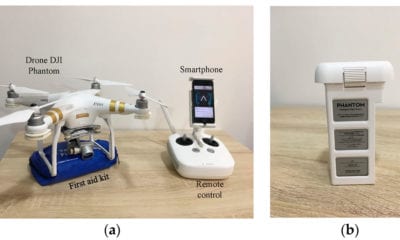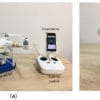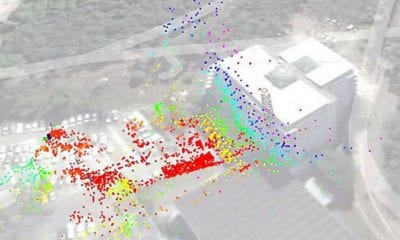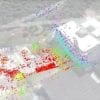News
Antennas for Origami Disposable Drones
Nowadays, unmanned aerial vehicles (UAVs), also known as drones, are very popular in industries such as food and agriculture, intelligent transportation systems and safety and security. One critical factor in UAVs is the wireless communication system where coverage and capacity is crucial for the reliable operation of a drone. For large coverage capabilities, drones require omnidirectional antennas where signal levels are mostly equal in all directions.
Currently, antennas are selected, designed and developed in order to meet these specifications in both commercial and defense applications – and can be located either inside or outside of the drone structure.
Disposable Drones are Attracting Significant Research Interest
A group of authors aims to investigate the potential antenna scenarios for disposable drones which may one day be fully fabricated using inkjet printing technology – simulated using CST Microwave Studio and comparing them with experimental results. They have submitted their paper titled, “Investigation of Antennas integrated into Disposable Unmanned Aerial Vehicles“, for future publication in the journal IEEE Transactions on Vehicular Technology.
“With the increasing use of additive manufacturing (AM) in the aerospace sector, it makes sense for UAVs [18] and corresponding antennas to be fabricated using AM techniques. Inkjet printing is a potential AM technology to apply. It allows the easy fabrication and prototyping of antennas on various substrates. The inkjet printing of antennas has been proposed for a variety of applications.”
With this, the authors are pushing disposable drones as one of the most interesting projects that is attracting a significant research interest – made of inexpensive and degradable materials such as paper or cellulose-based materials. The paper presents a study on the integration of antennas into origami disposable drones where two antennas based on a similar design concept are assessed for two conditions.

Realized paper drone geometry of (a) the unfolded planar photo paper
sheet and (b) perspective view of paper
drone.
“The first is when all electronic components and the ground plane are located on the wings. The second is a when the electronic components are at the bottom of the drone and the antenna needs to be fed from bottom up.”
One of the simplest forms of disposable drone can be developed using origami techniques where a piece of paper can be folded to produce the drone. The paper is of standard A4 format – however thicker – in order to provide a stable gliding flight even when loaded with additional avionic control systems.

Photograph of (a) printed planar photo paper sheet (b) the origami
paper drone and (c) front view of the drone
A vertically polarized antenna is also used at the base of the paper drone – mainly to assess the metallic ink layers deposited in the fabrication process. Small enough to be hidden inside the vertical section of the plane and isolated from the external environment, the antenna was realized using the same fabrication procedure as in the previous projects.
“The best antenna solution for drone communication tends to be when the antenna is vertically polarized and omnidirectional. Different antenna positions are possible when considering paper drones. One possible scenario is when the electronics are located on the wings. In this case, an antenna can be located facing downwards and using the wings as a ground plane. A second case is when the electronics are in the lower section of the plane, in which case a CPW fed antenna can be hidden inside the plane.”

Configuration of the realized optimized paper plane drone.
As a low-cost fabrication procedure, this form of inkjet printing with off-the-shelf printers (and cartridges containing silver ink) may produce tracks with discontinuity at the edges. However, the fabrication errors don’t seem to significantly affect the performance of antennas at the frequency of operation of commercial drones.
Conclusion
Fully confident in this method, the authors believe that disposable origami drones may include other electronic components in the future – paving the way for fully integrated disposable drone solutions and supporting the vision in the new field of drone monitoring.
Citation: Investigation of Antennas integrated into Disposable Unmanned Aerial Vehicles, S. Jun, B. Sanz, Izquierdo, D. Bird and A. McClelland, 0.1109/TVT.2018.2882791, IEEE Transactions on Vehicular Technology – https://ieeexplore.ieee.org/stamp/stamp.jsp?tp=&arnumber=8552378


























